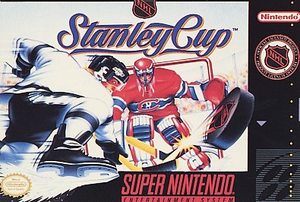
Author: jrsupermoore
The Super Nintendo library was flooded with hockey games, but two released in 1993 were better than the others. NHL 94 played realistically, with the signature bird’s eye perspective Electronic Arts Sports used for NHL 98 and beyond. A favorite of sports game fans, NHL 94 boasted licenses from both the National Hockey League and NHL Players Association. Then there was NHL Stanley Cup, which didn’t receive the NHLPA license, but offered a unique 3D perspective and hard-hitting action. Instead of the comfortable rooftop perspective, Stanley Cup featured an action-trailing camera and Mode 7 design. But even with these quirks and many more, Stanley Cup is a memorable game that deserves more recognition than being considered NHL 94’s second fiddle.
Accept the Ambition
NHL Stanley Cup is an ambitious game. The game attempted to highlight the viciousness of a sport with rag doll checks and nearly invincible goalies. It caught the action from just 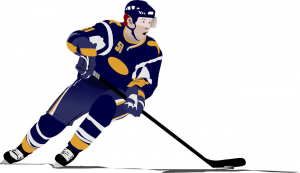 about any angle on the rink, with a rotating camera following the advancement of the puck. It tried to represent the talent pools of each team, without properly naming the players. I think the game succeeded on most of these fronts. But I think for even the weaker points, such as the queasiness felt by those unable to adapt to the incessant rotating, the game deserves laud for its attempt at ambition.
about any angle on the rink, with a rotating camera following the advancement of the puck. It tried to represent the talent pools of each team, without properly naming the players. I think the game succeeded on most of these fronts. But I think for even the weaker points, such as the queasiness felt by those unable to adapt to the incessant rotating, the game deserves laud for its attempt at ambition.
It’s easy to look back and gawk at the apparent choppiness of an ancestor of 3D; that is until you notice the similarities it holds to household classics from the next generation. Stanley Cup feels like Mario 64, Donkey Kong 64 and many other notable games from the N64 library, just without polygons. Another similarity is the fact that this game’s universe shifts according to gameplay and not the User’s whim. C-buttons wouldn’t be useful here however, because you’re too busy using your right thumb for action: shooting, passing, as well as poke, hip and cross-checking. The camera only shifts when there is a change in possession. So keep the puck, and you’ll avoid excessive 180-degree turns. If one can get over the absence of C-buttons, this game should go over well for fans of the N64.
A Tough Game for Tough Guys
As hinted at by the opening rock theme, Stanley Cup proves without a doubt hockey is a 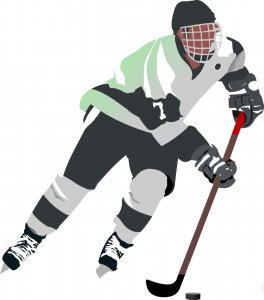 tough game for tough guys … n’ girls. Unless you are a flawless passer on a team of estimable quickness, your players will absolutely be checked into the next century several times throughout a match. But unless you turn the penalties off, you’ll be taxed severely for over aggression. About every third cross-check, performed by simply pressing Y next to your opponent, puts your player in the box for two minutes. The probability is roughly the same for hip checks, which occur when pressing X and look like you’re backing that thing up. As inconvenient as penalties are, they have their advantage: the more players removed from the rink, the less input the hardware has to process, meaning everything speeds up! It’s a blast when the penalty box is maxed at two players from each team. Not only does every player move at turbo speed, but it becomes a cross-checking holiday as no penalties will be called until a player has returned from the box.
tough game for tough guys … n’ girls. Unless you are a flawless passer on a team of estimable quickness, your players will absolutely be checked into the next century several times throughout a match. But unless you turn the penalties off, you’ll be taxed severely for over aggression. About every third cross-check, performed by simply pressing Y next to your opponent, puts your player in the box for two minutes. The probability is roughly the same for hip checks, which occur when pressing X and look like you’re backing that thing up. As inconvenient as penalties are, they have their advantage: the more players removed from the rink, the less input the hardware has to process, meaning everything speeds up! It’s a blast when the penalty box is maxed at two players from each team. Not only does every player move at turbo speed, but it becomes a cross-checking holiday as no penalties will be called until a player has returned from the box.
The goalies in Stanley Cup are designed to block just about anything that comes in front of them. Especially with the Mike Richters, Chris Osgoods, Patrick Roys and Dominik Haseks of the world in the game (they are unnamed but their impregnability betrays them). Tricks like double move wrist shots won’t fool ‘em. Sometimes a goalie will have a noticeable weakness, other times they will not. But you’ll have fun controlling the goalies because they are dominant. When equipped with the puck, your goalie is on a timer before “icing” the puck is called, but he can mow down several opponents before this occurs. Although the possibility of being pick pocketed exists, it can be an effective strategy to produce a four-on-two matchup, giving your team a clear numbers advantage as you attack their end of the rink. With their hockey masks, these blokes look scary as hell, and you’ll be motivated to find ways to score on them.
Passing in Stanley Cup is difficult. There’s an icon above every player telling his position,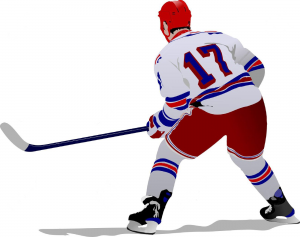 and it will change color to red when you’re ready to take a pass. And you better find him before you get clobbered. But keep in mind the two line pass rule. You’ll want to feed him after passing your own blue line. Teammates have a way of being picky about passes, so sometimes you’ll have to press A to become the receiver to make sure you receive the puck. Because Stanley Cup favors the speedy guys, you’ll find it easiest to feed your fast wing or center breaking toward your opponent’s blue line. In fact, you’ll find it helpful to develop a strategy based on your star player, but more on that later.
and it will change color to red when you’re ready to take a pass. And you better find him before you get clobbered. But keep in mind the two line pass rule. You’ll want to feed him after passing your own blue line. Teammates have a way of being picky about passes, so sometimes you’ll have to press A to become the receiver to make sure you receive the puck. Because Stanley Cup favors the speedy guys, you’ll find it easiest to feed your fast wing or center breaking toward your opponent’s blue line. In fact, you’ll find it helpful to develop a strategy based on your star player, but more on that later.
In addition to the option of turning off the structure rules such as off side and two line pass, you can also take the penalties off. Doing so will turn the match into a slash fest seldom seen in a sports game not focusing on hyperbole. If you don’t turn them off, penalties are called at random and with random explanation. By performing the same two actions, cross-check and hip-check, a player is docked two minutes playing time for roughing, tripping, hooking and a bunch of other stuff. There’s no fighting in Stanley Cup, but you can be charged randomly for slashing and be given four minutes. There is an advantage system regarding penalties, meaning you have one more opportunity to score before your opponent touches the puck and is charged. There is no interference penalty, however. If you run into the goalie, you pay your time on the ground for several seconds.
Ride the Hot Stick
Aside from Easter egg-like scoring techniques–and a whole article could be written on 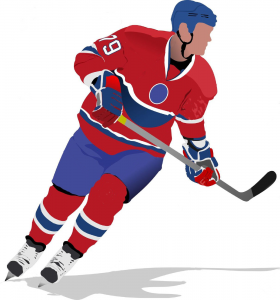 those–the key to success in Stanley Cup is utilizing your star icemen. I recently played a season with the Buffalo Sabres where I rode the stick of nameless #89 for over 100 goals and over 70 wins. I wasn’t familiar with this jersey’s real life counterpart, but some players are easily identifiable: #99 on the Kings, #88 on the Flyers, #s 88 and 89 on the Penguins, #89 on the Redwings, etc, all correspond to real life players. In addition to the great goalies, these are the guys that matter. Especially when against a slower team, it’s conducive to become your star player, whose icon you’ll be able to find in the top corner of the screen. Cruise down the rink and poke check the puck handler till it pops free and you can claim it. Avoid defenders until you can use the lay up approach and try to slip it in past the goalie. The more opportunities you give your star players the better. Since the goalies are difficult to score on, you’ll want to be a puck hog with the big boys.
those–the key to success in Stanley Cup is utilizing your star icemen. I recently played a season with the Buffalo Sabres where I rode the stick of nameless #89 for over 100 goals and over 70 wins. I wasn’t familiar with this jersey’s real life counterpart, but some players are easily identifiable: #99 on the Kings, #88 on the Flyers, #s 88 and 89 on the Penguins, #89 on the Redwings, etc, all correspond to real life players. In addition to the great goalies, these are the guys that matter. Especially when against a slower team, it’s conducive to become your star player, whose icon you’ll be able to find in the top corner of the screen. Cruise down the rink and poke check the puck handler till it pops free and you can claim it. Avoid defenders until you can use the lay up approach and try to slip it in past the goalie. The more opportunities you give your star players the better. Since the goalies are difficult to score on, you’ll want to be a puck hog with the big boys.
The obvious aim of hockey is to score goals. But if you play hockey or watch, you’re gonna want to throw out a lot of your knowledge. There are virtually no rebound opportunities. While you can get some goals with the old back post pass, it’s more affective to approach from the right or left side like you would a lay up in basketball. Right as you’re about to get smashed by the big guy in pads, cut across the goal and shoot before the goalie catches up. This works best with fast players, who are also generally those with the best aim. These are the ways of scoring which resemble the sport Stanley Cup means to represent, but there are many other unconventional ways. By playing around with the X button, which by design is the “dump” action, you can discover ways to fool the goalie into leaving the net for an open rebound shot.
The Super NES had a variety of ways of wooing us to what it had to offer. For some it was the music, but obviously the new graphical abilities had much to do with it. While most successful games maximized the capabilities of 16 bits, some games took a step into the future by toying with 3D presentation. Through rugged 3D graphics, Stanley Cup demands respect for being able to set itself apart from much of the sub-par quality in its sub-genre. It’s not for the faint of heart. But for those who appreciate a retro piece with a cutting age vibe, NHL Stanley Cup may be that match made in heaven.
Four out of Five Stars
![]()
![]()
![]()
![]()
CLICK HERE TO DISCUSS IN FORUM
HAVE AN OPINION?
You can submit reviews for games on the Submissions page.






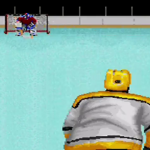


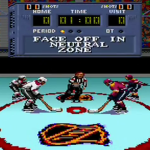

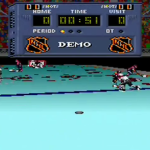



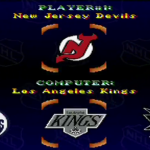
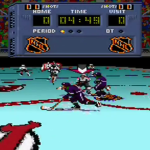

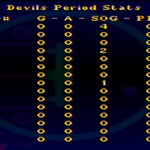
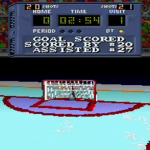

doesn’t look like a bad game, but I just don’t like hockey at all lol. this was a good review though!
I love that NHL lock out is a search tag!
Yep, I couldn’t resist capitalizing off of the beginning of this year’s NHL “mini-season!” It definitely fits with the theme of nostalgia, which would have us believe that everything was much simpler, a.k.a. not always about money, “way back when.”
I know nothing about the rules of Ice Hockey, I like to watch it when I can though. This game looks strange, I bet it takes some getting used to with that revolving camera.
I’ll probably stick with NHL’96 next time I fancy playing a game of Hockey and continue to get my ass handed to me while trying to score with the Quebec Nordiques.
This game emphasized presentation a little too much. EA’s NHL series were all about solid, stats-based gameplay. NHL ’94 is still my favourite, though you can’t go wrong with ’96.
Bonus points for using the Quebec Nordiques (they’re my team in NHL ’94)
Sweet, yeah they just seem above average in stats and had a cool name so I stuck with them.
I see what you mean by ‘too much presentation.’ Recently I reviewed NHL 99 for an N64 fansite, where I praise the game for sticking to the simple, above-camera format. So where as Stanley Cup on SNES was ambitious, and I thought it worked, NHL99 on N64 has its roots in the simplistic, and I thought that worked as well. It’s a great game.
http://micro-64.com/reviews/nhl99.shtml
Also worth noting that this game has “blue ice”, like the EA NHL games on the Genesis. The EA NHL games on the SNES have white ice.
Never really noticed that until now, good call Rush. They also used the “blue ice” on NHLPA ’93 for the SNES
Yep, in my Buffalo Sabres season it was fun to hand it to the push-over Quebec “Nor-dih-cues.”
Just saw the Maple Leafs beat the Sabres last week! The ice was most definitely white as well!
This review makes me feel bad that this was the game I took apart to make my Mario & Wario work on my SNES.
Now, if Mario and Wario is a much better game than NHL Stanley Cup, it may not have been a bad trade-off. How about you let us know by writing a review?